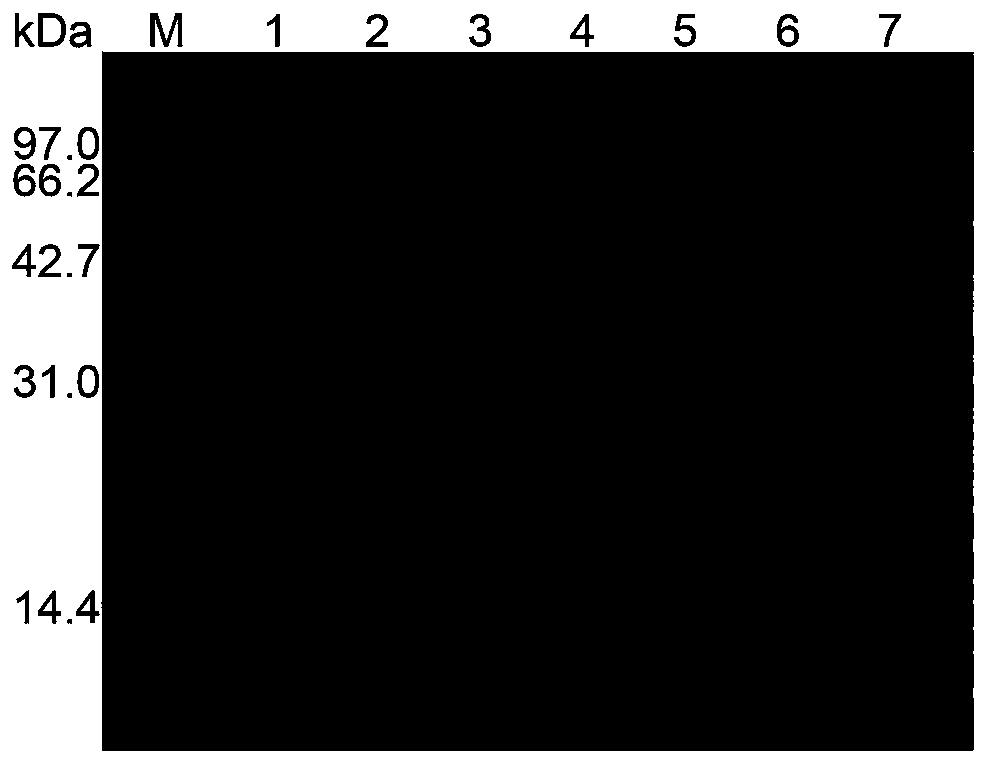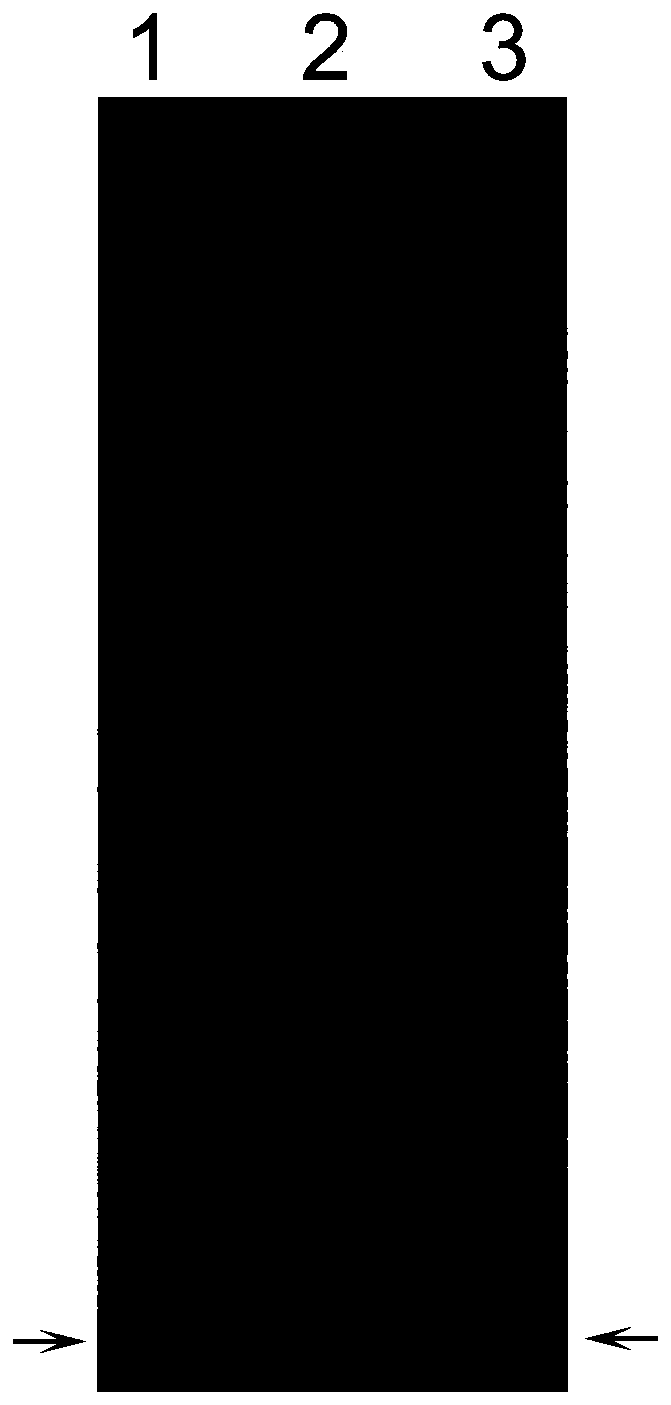Method for synthesizing sucrose-6-phosphate from recombinant high-temperature-resistant sucrose phosphate synthase
A technology of phosphate synthase and high temperature resistance, which is applied in the field of enzyme engineering and can solve the problems of difficulty in the preparation and purification of sucrose-6-phosphate
- Summary
- Abstract
- Description
- Claims
- Application Information
AI Technical Summary
Problems solved by technology
Method used
Image
Examples
Embodiment 1
[0059] The preparation of embodiment 1 escherichia coli BL21 (DE3) competent cell
[0060] Shake 4ml of Escherichia coli BL21(DE3) to the exponential growth phase; centrifuge at 10000g for 2min to collect the bacteria; add 1ml of 0.1M calcium chloride to resuspend the cells; centrifuge at 10000g for 2min to collect the bacteria; add 1ml of 0.1M calcium chloride and resuspend Suspend bacteria in ice bath for 45 minutes; heat shock at 42°C for 2 minutes; add LB medium preheated at 37°C and place on a shaker for 1.5 hours; collect bacteria by centrifugation, and spread bacteria on agarose gel containing kanamycin LB board.
Embodiment 2
[0061] Example 2 Cloning of high temperature resistant sucrose phosphate synthase gene, construction of overexpression plasmid, transformation of Escherichia coli BL21 (DE3)
[0062] Insert the gene of high temperature resistant sucrose phosphate synthase (the uniprot database number is tll1590) into the plasmid pET28a, the restriction endonuclease sites are NdeI and XhoI, the end of the cDNA of high temperature resistant sucrose phosphate synthase is added with stop codon TAA, The obtained plasmid was named pET28a_tll1590; 0.1-10 μg of plasmid pET28a_tll1590 was transferred per 0.1 ml of Escherichia coli BL21 (DE3).
Embodiment 3
[0063] Example 3 Induced expression and affinity chromatography purification of high temperature resistant sucrose phosphate synthase
[0064] (1) Pick several Escherichia coli colonies, place them in 10ml LB liquid medium, place them in a shaker for culture, the temperature of the shaker is 37°C, and the speed of the shaker is 200rpm, cultivate overnight; expand to 1L LB liquid medium cultured in a shaker, the temperature of the shaker is 37°C, the speed of the shaker is 200rpm, and cultivated to the exponential growth phase; add 0.1-10mM IPTG to induce protein expression, the induction temperature is 37°C, and the induction time is 16h; the next day Bacteria were collected by centrifugation at 5000g;
[0065] (2) Discard the supernatant, add 50ml bacterial lysate (50mM Tris-HCl, pH 8.0, 150mM NaCl and 20mM imidazole), fully suspend the bacteria, ultrasonically lyse the bacteria for 20min, power 30%, turn on for 3 seconds, turn off 3 seconds;
[0066] (3) Centrifuge at 1200...
PUM
 Login to View More
Login to View More Abstract
Description
Claims
Application Information
 Login to View More
Login to View More - R&D
- Intellectual Property
- Life Sciences
- Materials
- Tech Scout
- Unparalleled Data Quality
- Higher Quality Content
- 60% Fewer Hallucinations
Browse by: Latest US Patents, China's latest patents, Technical Efficacy Thesaurus, Application Domain, Technology Topic, Popular Technical Reports.
© 2025 PatSnap. All rights reserved.Legal|Privacy policy|Modern Slavery Act Transparency Statement|Sitemap|About US| Contact US: help@patsnap.com



